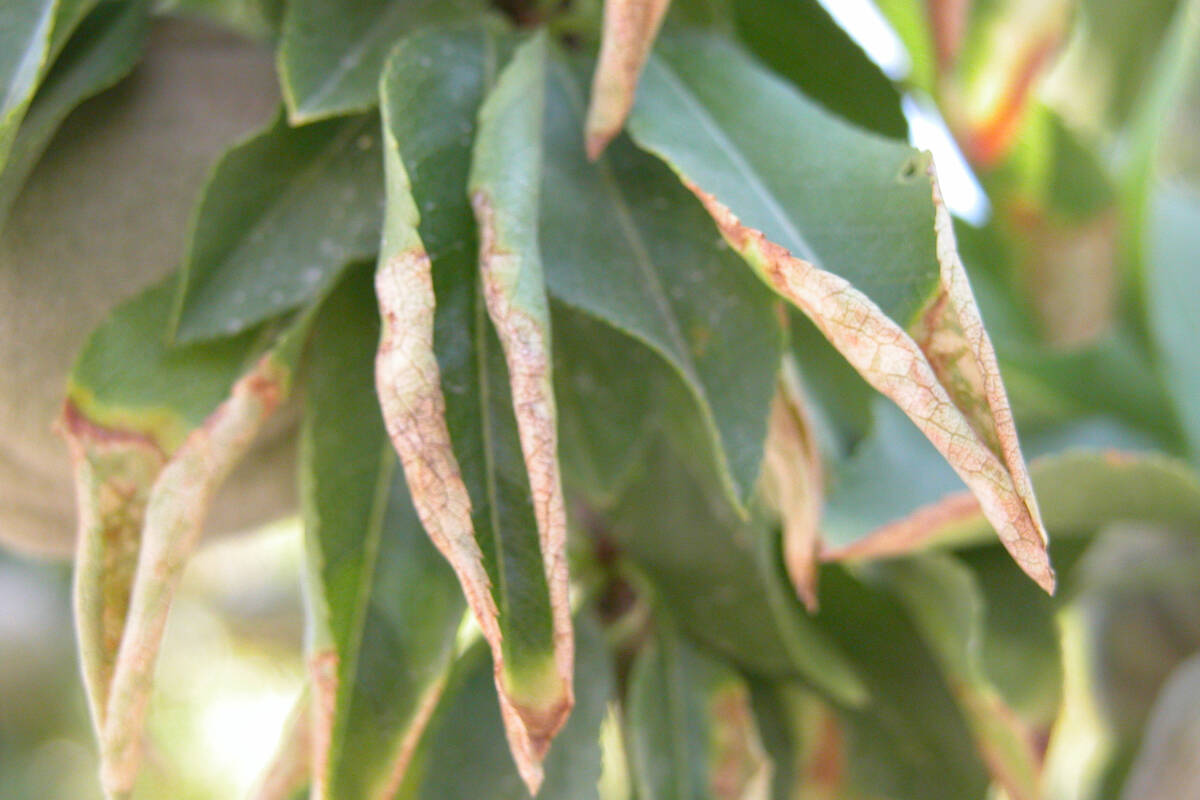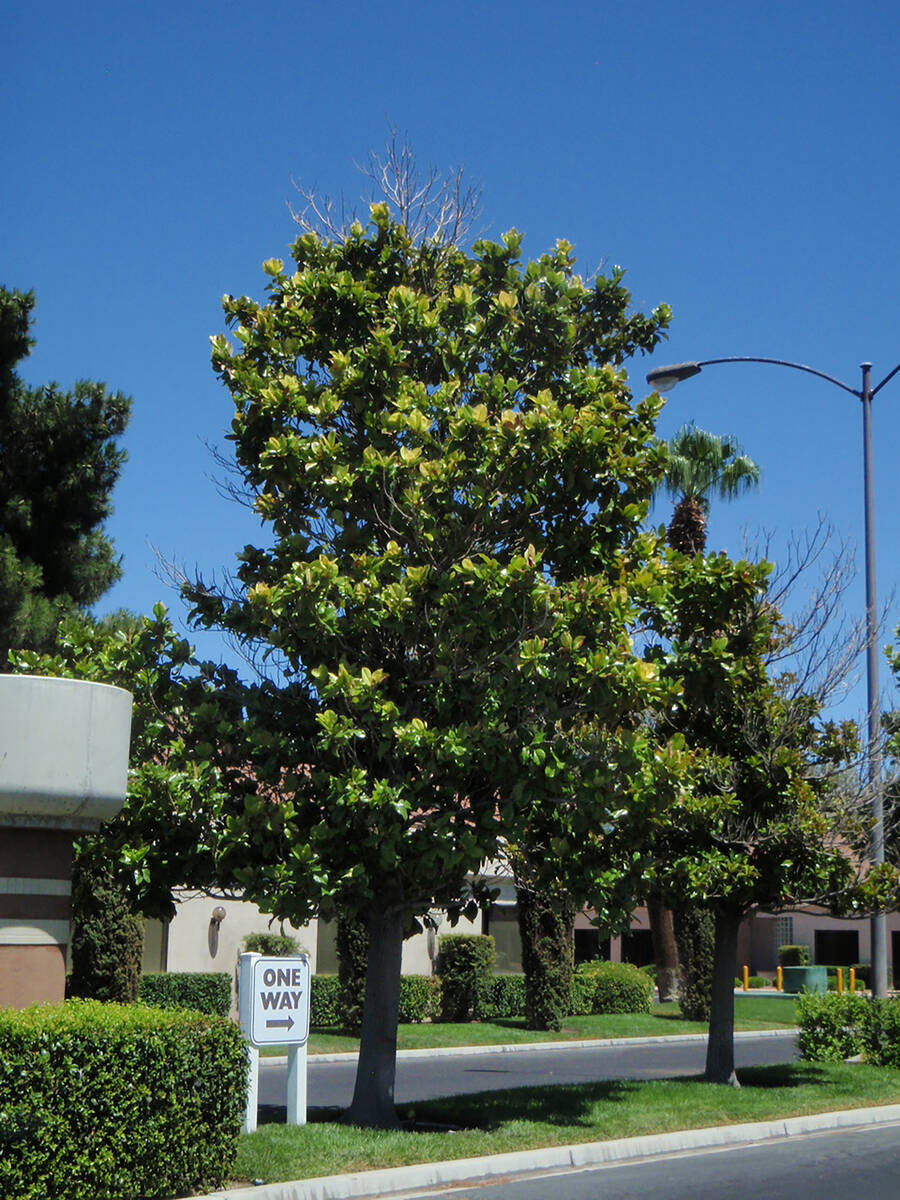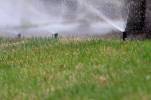What can be done about high boron levels in soil?
Q: A soil test was done, and the No. 1 problem that showed up is toxic levels of boron. The area was used for horses for approximately 15-20 years. A variety of fruit trees have been planted there and repeatedly fail. I should also mention that the irrigation is by well water. A grapevine by the back fence where the horses were not able to contaminate the soil is doing well. What would you suggest, other than leaching to balance the soil for the fruit trees?
A: Boron is one of the salts commonly found in desert soils. It can be present naturally or it can accumulate over the years in such places as horse corrals.
It may be in the upper soil layers only. It may be less expensive to replace the contaminated soil if the problem is only in the upper few inches.
Boron is found principally as borates. It is removed by leaching the soil (“flushing”) with uncontaminated water that removes harmful boron salts. You are flushing this salt to a lower concentration.
If you do not know the boron content in the water used for flushing, have it tested. Use a soil-testing facility in a desert region. They will be more familiar with boron contamination.
Once the soil and water tests have been done, you can use this water for flushing salts from the soil. A general rule with common salts (not boron) is that flushing with 6 inches of good water reduces soil salt levels by 50 percent, 12 inches by 80 percent, and 24 inches by 90 percent. To remove boron salts from soil takes about three times as much water.
Every plant has different tolerances for salt. Maybe this is why the grapevine has done well but not the fruit trees.
Q: I have a female dog and a fescue lawn. I had a consultant out who said the dog caused the brown spots in the lawn. What do you suggest? Please don’t say get rid of the dog!
A: The brown areas in the lawn are created by a female dog squatting when she urinates. Male dogs don’t cause brown spots in the lawn because they don’t squat to urinate.
Since the primary culprit is the nitrogen in the urine, fertilizing with a high-nitrogen fertilizer, three or four times, evens out brown spot problems. Ammonium sulfate (21-0-0) helps get rid of taller green areas and evens out the mowing height in the lawn. Apply ammonium sulfate no more than once during the growing season.
Normally applied to a lawn is a high-nitrogen fertilizer such as 21-7-14 or 20-5-10 (those are a 3-1-2 or 4-1-2 fertilizer ratios).
Put this type of fertilizer on three or four times each year. Try to avoid the hot months (or time of day), but don’t forget an application during late fall, around Halloween. These fertilizers won’t get rid of these brown spots but will get rid of most of the unevenness in the lawn and make it greener.
Q: What is going on with my 2-year-old magnolia tree? Others in the neighborhood are beautiful.
A: It could be a number of issues: height, age, landscape exposure, watering, soil improvement. A magnolia is not a tree for the desert, even when they look young. Trees that died in the neighborhood were removed. All that is left are the survivors.
Magnolias are not small trees. They can get to 50 feet or taller. Even if plants can handle the heat, their eventual height may not justify their existence in the desert. Big trees use more water than smaller trees — it just makes sense. As the tree gets bigger and more mature, more water is needed.
As this tree gets larger, it will have difficulty. Newly planted or younger trees are better suited to heat, particularly when surrounded by lawns or planted on the east side of a home.
As trees get larger, they need a wider area of support as their canopy width is larger. That means watering them over a larger area. That means they need more water applied. Trees (including a young magnolia tree) that are 10 to 20 feet tall should be watered 24 inches deep. A mature magnolia needs to be watered to a depth of 36 inches, or it will blow over in windstorms.
Next is which direction the tree is facing. Southern magnolias do not like the south or west sides of a home in the desert. It’s just too hot for them. It prefers to grow on the east side of a home. That is until it gets above the house.
Next is soil improvement. Southern magnolias prefer to grow in soil amended with compost. Magnolia grows in soil amended with organics combined with iron fertilizer every few years. Rock mulch on the surface gives the soil about three to five years before the soil mineralizes and no longer provides for the tree’s growth.
Bob Morris is a horticulture expert and professor emeritus of UNLV. Visit his blog at xtremehorticulture.blogspot.com. Send questions to Extremehort@aol.com.





























